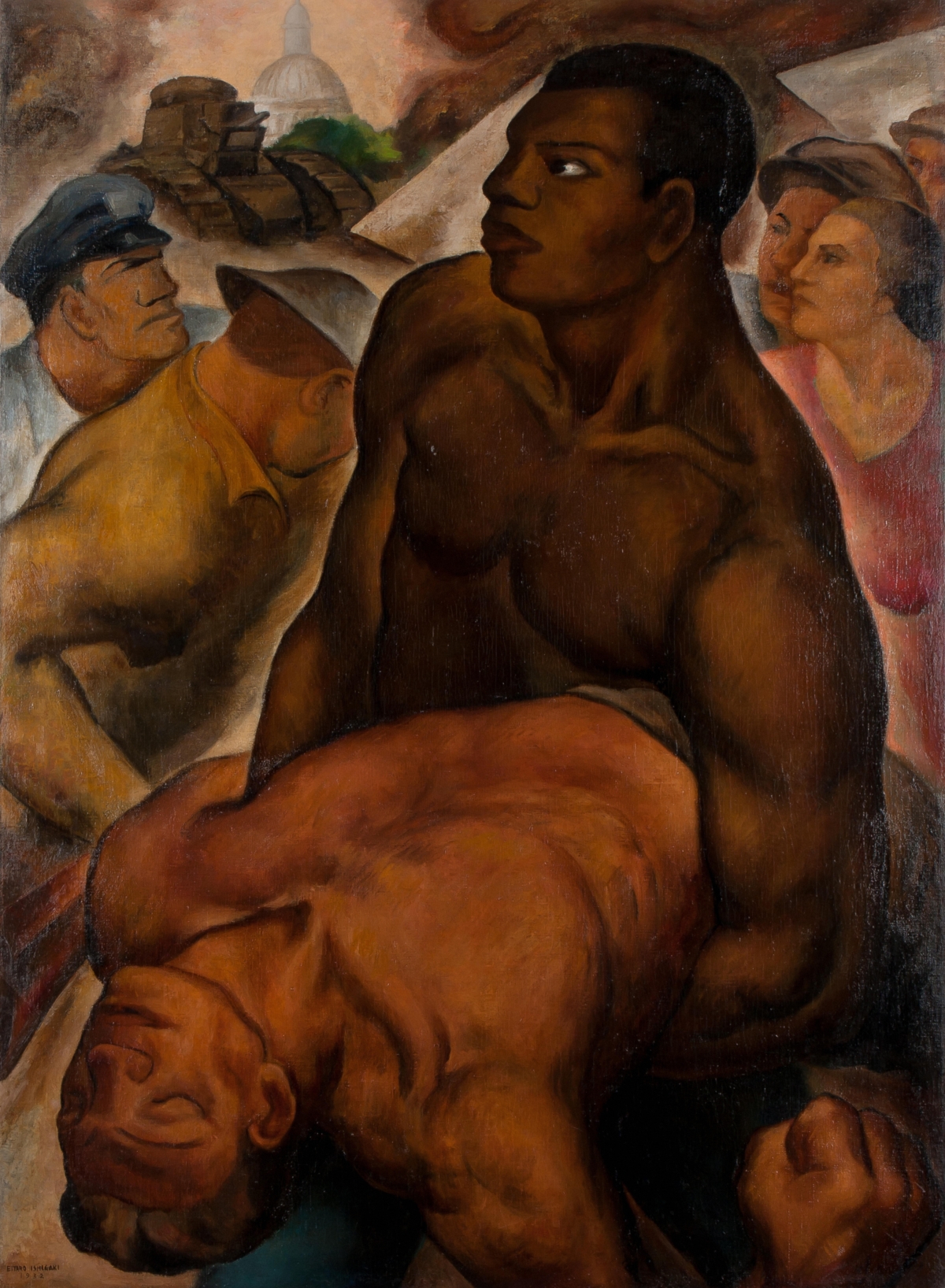
Eitaro Ishigaki
Born in Taiji Village (now Taiji Town), Higashimuro District, Wakayama Prefecture as the son of a ship carpenter. Ishigaki moved to the United States in 1909, called by his father who had already emigrated there. He first worked in Seattle and Bakersfield, then in 1911, moved to San Francisco. There he became acquainted with English, the Bible, and socialist literature in a Japanese Methodist church. He also met a poet, Isen Kanno, and his wife and a sculptor, Gertrude Boyle. Gertrude gave him a chance to attend art schools such as William Best School of Art. Later, he developed a romantic relationship with Gertrude and moved to New York with her in 1915. He studied under John Sloan at the Art Students League and developed friendships with Yasuo Kuniyoshi and Toshi Shimizu. In 1918, he joined a socialist group The Japanese Socialist Group in America led by Sen Katayama. As an establishing member of Ga Cho Kai, he exhibited at the Exhibition of Paintings and Sculptures by the Japanese Artists Society of New York City in 1922 and the Exhibition of Paintings and Sculptures by Japanese Artists in New York organized by The Japanese Times in 1927. His Whipping exhibited at The 9th Annual Exhibition of The Society of Independent Artists in 1925 marked his debut in the American art scene. In 1929, he joined the John Reed Clubs, meeting artists like Diego Rivera, a proponent of the Mexican mural movement. In 1935, he worked as the head artist for the Harlem Courthouse as part of the Work Progress Administration (WPA) project. However, he was dismissed in 1937 due to his lack of American citizenship. During World War II, he criticized Japan’s militarism together with his wife Ayako Tanaka and Yasuo Kuniyoshi, despite being observed and being classified as enemy aliens. After the war, he was expelled from the United States due to the Red Purge [the Red Scare]. In 1951, he returned to Japan, but unfortunately, he died in 1958 at the age of 65, before he could engage in earnest activities of painting.
- Eitaro Ishigaki, "Bonus March" :
- 1932, Oil on canvas, The Museum of Modern Art, Wakayama (Gift of Ayako Ishigaki)
